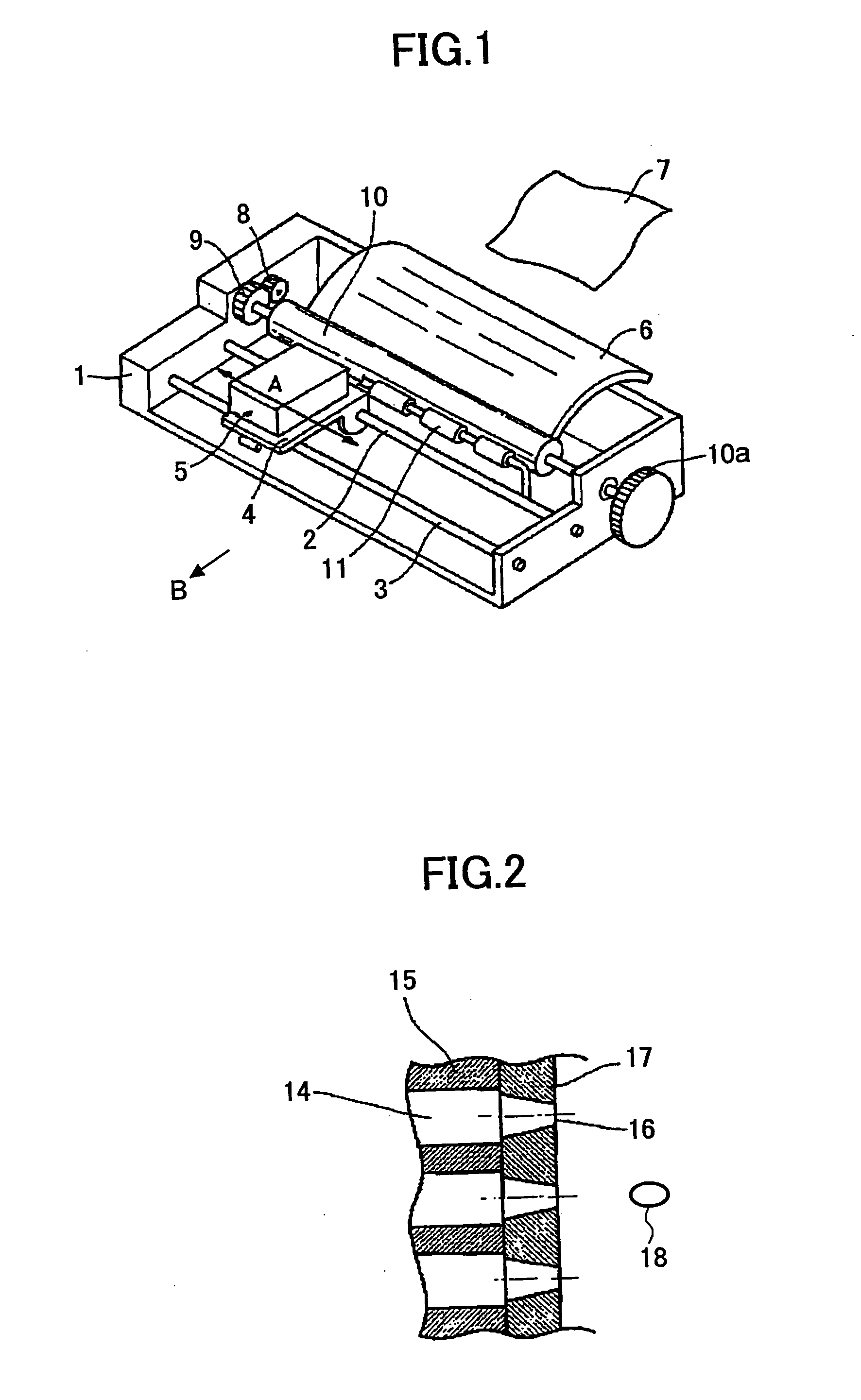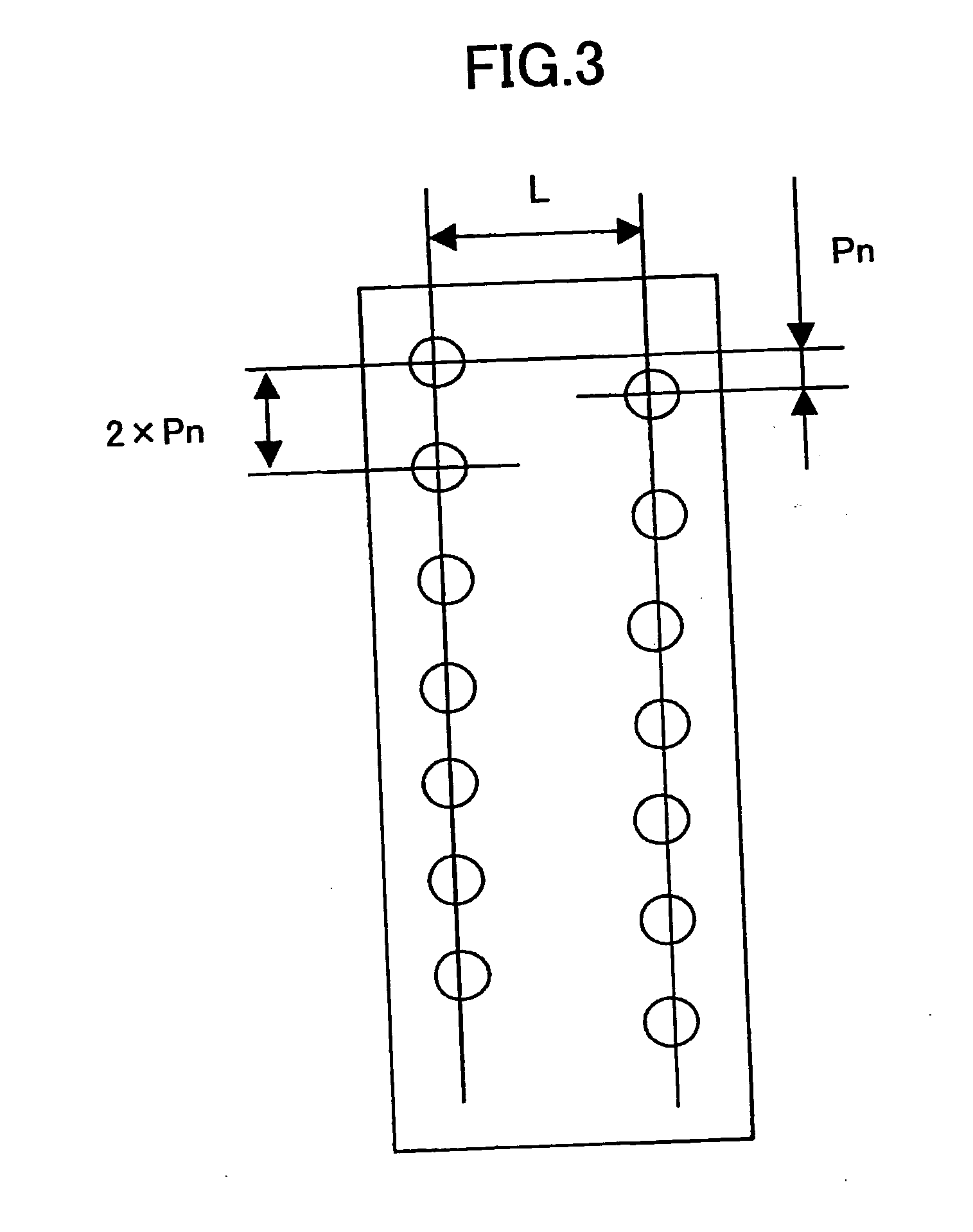[0141] According to the preferred embodiment of the invention, the average molecular weight of any of these copolymers used is desirably in the range of 3,000 to 50,000, more preferably, in the range of 5,000 to 30,000, and most preferably in the range of 7,000 to 15,000. The amount of addition of the dispersant used may be in such a range that the
pigment is dispersed stably without affecting the effects of the invention. The ratio of the
pigment to the dispersant is desirably in the range of 1:0.06 to 1:3 is desirable, and more preferably in the range of 1:0.125 to 1:3.
[0142] The ratio of the
pigment used for the colorant to the total weight of the
printing ink is in the range of 6% to 20% by weight, and the grain size of the colorant pigment is in the range of 0.05 micrometers to 0.16 micrometers. The pigment is dispersed in water, and the dispersant is the
macromolecule dispersant the molecular weight of which is in the range of 5,000 to 100,000. If the water-soluble
organic solvent containing the pyrolidone derivative, especially 2-pyrolidone is used for at least one of the color inks, the image quality will improve.
[0143] (2) to (4) Concerning the
wetting agent 1, the
wetting agent 2 and the water-soluble
organic solvent, the water is used as a
liquid medium in the ink. In order to obtain the desired physical properties of the ink and to prevent
dryness of the ink, and in order to improve the
dissolution stability etc., the examples of the water-soluble
organic solvent used may include the following. It is possible to use these water-soluble organic solvents by mixing two or more solvents.
[0144] The examples of the
wetting agents 1 and 2 and the water-soluble organic
solvent used may include the following: the polyhydric alcohols, such as
ethylene glycol, di-
ethylene glycol, tri-
ethylene glycol,
propylene glycol, di-propyrene glycol, tri-propyrene glycol,
tetra-
ethylene glycol,
hexylene glycol,
polyethylene glycol,
polypropylene glycol, 1,5-pentanediol, 1,6-hexanediol,
glycerol, 1,2,6-hexanetriol, 1,2,4-butanetriol, 1,2,3-butanetriol, petriol; the polyhydric
alcohol alkyl esters, such as
ethylene glycol mono-ethyl
ether,
ethylene glycol mono-butyl
ether, di-ethylene glycol mono-methyl
ether, di-ethylene glycol mono-ethyl ether, di-ethylene glycol mono-butyl ether,
tetra-ethylene glycol mono-methyl ether,
propylene glycol mono-ethyl ether; the polyhydric
alcohol allyl ethers, such as ethylene glycol mono-phenyl ether, ethylene glycol mono-
benzyl ether; the
nitrogen- including multi-ring compounds, such as 2-pyrolidone, N-methyl-2-pyrolidone, N-hydroxyethyl-2-pyrolidone, 1,3-dimethylimidazolidinone, epsilon-
caprolactam, gamma-butyrolactone; the
amide compounds, such as
formamide, N-methyl
formamide, N,N-
dimethyl formamide; the amine compounds, such as mono-
ethanol amine, di-
ethanol amine, tri-
ethanol amine, mono-ethyl amine, di-methyl amine, tri-ethyl amine; the
sulfur-including compounds, such as di-methyl
sulfoxide,
sulfolane, thiodiethanol;
propylene carbonate,
carbonic acid ethylene, etc.
[0145] The desirable examples of these organic solvents may include
diethylene glycol, thiodiethanol,
polyethylene glycol 200-600,
triethylene glycol,
glycerol, 1,2,6-hexanetriol, 1,2,4-buthanetriol, petriol, 1,5-penthanediol, 2-pyrolidone, and N-methyl-2-pyrolidone. These are effective in
solubility and prevention of the poor injection characteristic due to the
moisture evaporation.
[0146] The other wetting agents suitably used may contain the saccharide. The examples of the saccharide used may include the monosaccharides, the
disaccharide, the oligosaccharides (the
trisaccharide and quatrosaccharide are included), and the polysaccharides. The desirable examples of the polysaccharides may include the glucose, the
mannose, the
fructose, the
ribose, the
xylose, the
arabinose, the
galactose, the
maltose, the
cellobiose, the
lactose, the
sucrose, the
trehalose, the
maltotriose, etc. Here, the
polysaccharide means the
sugar in the wide sense and suppose that it includes the substances which widely exist in the nature, such as alpha-
cyclodextrin,
cellulose, etc.
 Login to View More
Login to View More  Login to View More
Login to View More 


